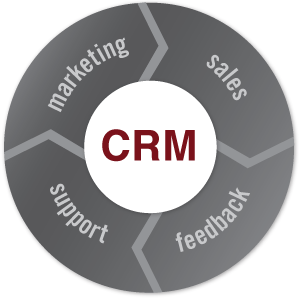The case for electronic medical records is compelling: They can make health care more efficient and less expensive, and improve the quality of care by making patients’ medical history easily accessible to all who treat them.
First Person: Which ‘HT’ to Treat: Hypertension or Hammertoe? (October 9, 2012)
Redefining Medicine With Apps and iPads (October 9, 2012)
Small wonder that the idea has been promoted by the Obama administration, with strong bipartisan and industry support. The government has given $6.5 billion in incentives, and hospitals and doctors have spent billions more.
But as health care providers adopt electronic records, the challenges have proved daunting, with a potential for mix-ups and confusion that can be frustrating, costly and even dangerous.
Some doctors complain that the electronic systems are clunky and time-consuming, designed more for bureaucrats than physicians. Last month, for example, the public health system in Contra Costa County in California slowed to a crawl under a new information-technology system.
Doctors told county supervisors they were able to see only half as many patients as usual as they struggled with the unfamiliar screens and clicks. Nurses had similar concerns. At the county jail, they said, a mistaken order for a high dose of a dangerous heart medicine was caught just in time.
The Switch to Electronic Medical Records
The first national coordinator for health information technology, Dr. David J. Brailer, was appointed in 2004, by President George W. Bush. Dr. Brailer encouraged the beginnings of the switch from paper charts to computers. But in an interview last month, he said: “The current information tools are still difficult to set up. They are hard to use. They fit only parts of what doctors do, and not the rest.”
Long before computers, many hospitals and doctors charged for services in ways that maximized insurance payments. Now critics say electronic records make fraudulent billing all too easy, and suspected abuses are under investigation by the Office of the Inspector General at the Department of Health and Human Services.
Like all computerized systems, electronic records are vulnerable to crashes. Parts of the system at the University of Pittsburgh Medical Center were down recently for six hours over two days; the hospital had an alternate database that kept patients’ histories available until the problem was fixed.
Even the internationally respected Mayo Clinic, which treats more than a million patients a year, has serious unresolved problems after working for years to get its three major electronic records systems to talk to one another. Dr. Dawn S. Milliner, the chief medical informatics officer at Mayo, said her people were “working actively on a number of fronts” to make the systems “interoperable” but acknowledged, “We have not solved that yet.”
Benefits
Still, Dr. Milliner added that even though there a lot of challenges, the benefits of information technology are “enormous”. This includes improved safety and quality of care, convenience for patients and better outcomes in general.
Patients at Mayo’s headquarters in Rochester, Minn., and its Arizona and Florida sites can see their records online, even via an iPhone app; those in Mayo’s network of doctors’ offices and hospitals in the upper Midwest will eventually have similar access.
In the rare event that a large-scale system goes down at Mayo, backup measures are ready, teams are called in to make rapid repairs, and if necessary “everyone is ready to go on paper,” Dr. Milliner said.
Downsides
Reliable data about problems in the electronic systems is hard to come by, hidden by a virtual code of silence. This is enforced by fears of lawsuits and bad publicity. A recent study commissioned by the government sketches the magnitude of the problem. It calls for tools to report problems and to prevent them.
Based on error rates in other industries, the report estimates that if and when electronic health records are fully adopted, they could be linked to at least 60,000 adverse events a year.
The report, to the Agency for Healthcare Research and Quality, analyzed ways of forestalling hundreds of information technology “hazards” at seven hospitals and health systems. A typical example would be drug orders transmitted by an electronic app to a pharmacy using a different app.
“It’s hard to keep them speaking the same language, to automatically link a medication in one app to exactly the same medication and dose in the other app,” said Dr. James M. Walker, chief health information officer of the Geisinger Health System, who led the study.
Safety Issues
The Obama administration will issue a report on patient safety issues in early November. The current national coordinator, Dr. Farzad Mostashari, said this in an interview. That report was requested last year by a panel on health I.T. safety at the Institute of Medicine. Which is a unit of the National Academies of Science.
The institute recommended that the government create an independent agency like the National Safety Transportation Board to deal with patient safety issues. It also called for an end to “hold harmless” clauses that protect software manufacturers from lawsuits. However, they can limit the freedom of doctors and hospitals to publicly raise questions about errors or defects.
Elisabeth Belmont, a lawyer for the MaineHealth system, based in Portland, advises hospitals to reject contract language. That is if it could leave them responsible for settling claims for patient injuries caused by software problems. “One software vendor was surprised when my client opted to walk away and purchase the software from another vendor who had a more reasonable approach on these issues,” she said.
The institute also recommended that software manufacturers be required to report deaths. As well as serious injuries or unsafe conditions related to information technology. So far, however, neither a new safety agency nor such a reporting system has been adopted.
Some of the largest software companies have opposed any mandatory reporting requirement. But Gail L. Warden, chairman of the institute’s patient safety panel, said in an interview that the industry was divided on the issue. Some companies were accustomed to regulations for their widely used medical devices for imaging, for example.
Community Response
Critics are deeply skeptical that electronic records are ready for prime time. “The technology is being pushed, with no good scientific basis,” said Dr. Scot M. Silverstein, a health I.T. expert at Drexel University who reports on medical records problems on the blog Health Care Renewal. He says testing these systems on patients without their consent “raises ethical questions.”
Another critic, Dr. Scott A. Monteith is a psychiatrist and health I.T. consultant in Michigan. He notes that Medicare and insurance companies generally do not pay for experimental treatments that have not proved their effectiveness.
A Medicare administrative contractor, National Government Services, said recently that it would deny payment for treatments using “cloned documentation” copied from electronic records. This is rather than individualized patient notes composed by doctors and nurses to show medical necessity. Dr. Monteith said the electronic systems were “disrupting traditional medical records and, beyond that, how we think” — the process of arriving at a diagnosis. For example, the diagnosing process can include “looking at six pieces of paper,” he said. “We cannot do that on a monitor. It really affects how we think.”
Improvement Suggestions
Deborah Burger is a registered nurse of over 30 years who works with pain medicines and anti-anxiety drugs for colonoscopy patients. She said electronic systems offered “drop-down menus of so-called best practices.”
“The problem is each patient is an individual,” said Ms. Burger, who is president of the California Nurses Association. “We need the ability to change that care plan, based on age and sex and other factors.”
She acknowledged that the system had one advantage: overcoming the ancient problem of bad handwriting. “It makes it easier for me to read progress notes that physicians have written, and vice versa,” she said.
Some experts said they were hopeful that the initial problems with electronic records would be settled over time. Dr. Brailer, who now heads Health Evolution Partners, a venture capital firm in San Francisco, said that “most of the clunky first-generation tools” would be replaced in 10 years. “As the industry continues to grind forward, costs will go down,” he said. “Tools are being simplified.”
Mark V. Pauly, professor of health care management at the Wharton School, said the health I.T. industry was moving in the right direction. However, that it had a long way to go before it would save real money.
“Like so many other things in health care,” Dr. Pauly said, “the amount of accomplishment is well short of the amount of cheerleading.”




